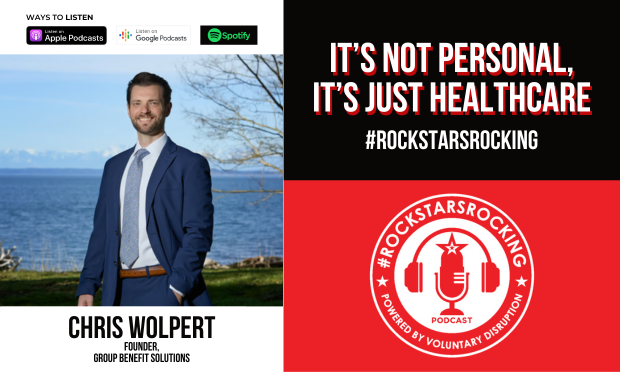|

With unemployment at all-time lows, more and more employers areoffering voluntary benefits to attract and retain high qualityemployees. In fact, a recent Aflac study shows that 42 percent ofemployees say “improving my benefit package” is one thing employerscould do to keep them in their job. This is second only to“increase my salary.”
|Because of the growing trend in participation with theseproducts, more carriers than ever are competing in this space.According to a 2017 Eastbridge Consulting study, 15 differentinsurance carriers wrote over $9 million in accident premium. Withall of these options, how does a broker or employer compare andcontrast these products? Before answering this question, it isvitally important that we define voluntary benefits (VBs).
|Related: 5 trends to expect in voluntary benefits in2019
|From an employee's perspective VBs are any product for whichthere is a payroll deduction, including major medical. When anemployee feels that they are paying for any benefit, regardless ofemployer contribution, the plan is in fact, “voluntary” to them.Most employers and brokers would classify VBs as any product towhich employers are not contributing. Lastly, enrollment firms andbenefit counselors will tell you that VBs are the traditionalworksite products like accident indemnity, critical illness,hospital indemnity, cancer, universal life/LTC, and sometimesshort-term disability. Over the past several years, voluntarybenefits have gone by several names, including but not limited to:worksite, supplemental, ancillary, enhanced, and gap. All of theseterms correctly describe VB, except for “gap.” True gap insuranceis an “expense incurred” benefit that coordinates with theunderlying major medical carrier to pay claims based off an EOB; itis not an Aflac Hospital Plan, Colonial Medical Bridge, or AllstateGroup Indemnity Medical. But, I digress. For purposes of thisarticle, I will be using the term “voluntary benefits” to refer tothe traditional worksite plans typically offered by carriers suchas Aflac, Allstate, Colonial, Transamerica, and many others.
|While messaging in the industry has changed over the past 10+years, one sentiment seems to remain constant: voluntary benefitscannot be spreadsheeted. This statement and ideology is laughable,at best. Not only can the value of VBs be shown in aspreadsheet format, but I'll explain why it should beshown with every single renewal.
|Let's start with the can. Numbers are a universallanguage. Numbers can be input into an Excel file andcompared. Brokers and employers can look at a spreadsheetand evaluate different benefits and premium amounts. Sure, no twoplans will be identical from carriers to carrier, but there arecertainly enough similarities to compare and contrast the value ofvarious plan designs.
|Take an accident plan for example. Most carriers will includeseveral bells and whistles to separate their plan from the field.However, most accident plans will contain coverage for the mostcommonly used benefits, such as wellness, initial treatment,follow-up visits, major diagnostic, physical therapy, hospitalconfinement, broken bones, and dislocations. Identify the mostimportant parts of each product, and compare those line itemsbetween carriers. Bam! It's really that simple.
|Now for the why.
|The why for brokers:
|For brokers, the why is both offensive and defensive.Traditionally speaking, most brokers focused on medical, dental,vision, LTD/STD, and group term life. By adding another line ofcoverage with VB, you effectively increase your value to yourclient and therefore the revenue you generate. However, most ofyour clients offer these products today, so in order to win thebusiness, you will need to displace the incumbent. Spreadsheetingis one way to show additional value or cost savings. In addition toincreasing revenue, adding lines of VB also insulates your currentbook of business. Your best clients are someone else's bestprospects. Brokers are using these VB products to become morecreative in their prospecting strategies. Comparing multiplecarriers will help you to decrease the chances of another brokergetting a seat at the table by pitching a solution that you haven'tshown. Even if you are averse to offering voluntary benefits, youshould still be prudent enough to allow your client to say “nothanks.”
|Bottom-line: Brokers need to spreadsheet VB to add valueto their clients and protect their current book ofbusiness.
|The why for employers:
|In October of 2018, unemployment reached 3.7 percent, the lowestrate since 1969. This means that employers are now competing forthe same talent pool. Competing on salary alone is no longer asolution. Employees want benefits. “Sixty percent of employees saya benefits package offering is extremely or very important to theirjob satisfaction, and 53 percent say it's extremely or veryimportant to their employer loyalty,” according to the 2017 AflacWorkforce Report.
|This competitive landscape is one of the factors contributing tothe demand for VBs. With demand, comes supply. More and morecarriers have started to offer VBs. Unlike major medical, this hascaused benefits to increase and premiums to decrease. Shop what'savailable to you. Demand to see options. You are protecting themost important financial decision that your employees will make allyear, benefit elections.
|Related: The first domino has fallen: acceleratingthe death of payroll deduction
|Many of my current clients initially told me, “My carrier agenttold me that I have an old plan, and that new plans won't competewith it. That I should keep this plan forever.”
|I call BS. If this statement is true, it should be easy toprove, because numbers don't lie. Most of the time, this statementis just plain false. Once we spreadsheet the price and products, wefind that over 90 percent of the time, we are able to offerenhanced benefits, cost savings, and/or underwriting value with anew carrier.
|There are, however, exceptions to the rules. For example, somecancer plans have “building benefit riders” that increase theinitial diagnosis benefit every year that the policy is in force.Other plans have “return of premium riders” that refund the premiumminus claims after a set amount of time (typically 20 years). Besure to look at your policy details (in writing!) before making anybenefit changes.
|Bottom-line: Employers need to spreadsheet these plansto make sure that they are providing their employees with the bestoptions available.
|The why for enrollment firms:
|Historically, most enrollment firms would have identified their“go to” carrier, place business with that carrier for a few years,then find a different “go to” carrier and repeat the process. Thiswasn't a bad strategy, because it was a win/win/win for the client,broker, and enrollment firm. The client received a new guaranteeissued underwriting offer, the broker was able to design newproducts that complemented changes in major medical, and theenrollment firm generated new revenue to cover the costs of 1-1enrollments and other value adds, but those days are long gone.
|One size never fits all. There are too many options on themarket today to simply designate a “go to” carrier. With more andmore benefit producers starting to take Broker of Record on VBs,both the producers and their clients are expecting these benefitsto be presented in a renewal discussion, just like any otherproduct lines; this means spread-sheeting. Numbers are part of theequation and should factor in to any benefit decision.
|Additionally, enrollment firms are starting to compete withcareer carrier reps that are marketing themselves as “agnostic,”but only selling the same carrier that they've sold their entirecareer. Separate yourself from the pack. Show off your ability toquote and implement several different carriers. Be a resource foryour broker partners, not just a product pusher.
|During a recent conversation with a friend who owns anenrollment firm I heard, “Why should I spreadsheet? Shouldn't myclients trust me?” Of course they should, but it should be becauseyou've earned it, and continue to earn it. Why wouldn't you want togo the extra step to make your broker partner look good to theirclients by showing that a carrier agnostic and analytical approachwas part of the evaluation process while choosing the recommendedVB strategy?
|Bottom line: Enrollment firms need to spreadsheet theseplans, because it's their job to make their broker partners lookgood.
|Overall, there are only three reasons someone would sayvoluntary benefits can't be spreadsheeted:
- Their product isn't competitive.
- They don't know the market well enough to shop the productswith multiple carriers.
- They don't have the time or desire to put in the extrawork.
Anything outside of these reasons is nothing more than anotherlame excuse.
|As the market changes, we all need to become better consumers.Part of consuming is shopping, but while numbers are an importantpart to any benefit decision, spread sheeting should only be onepart of the discussion. Other aspects to consider are: billing,claims, enrollment, platform compatibility, carrier consolidation,and ancillary/medical renewal negotiation. If you are a broker oremployer offering voluntary benefits, ask your expert for a carrieragnostic spreadsheet comparison for your next renewal.
Complete your profile to continue reading and get FREE access to BenefitsPRO, part of your ALM digital membership.
Your access to unlimited BenefitsPRO content isn’t changing.
Once you are an ALM digital member, you’ll receive:
- Critical BenefitsPRO information including cutting edge post-reform success strategies, access to educational webcasts and videos, resources from industry leaders, and informative Newsletters.
- Exclusive discounts on ALM, BenefitsPRO magazine and BenefitsPRO.com events
- Access to other award-winning ALM websites including ThinkAdvisor.com and Law.com
Already have an account? Sign In
© 2024 ALM Global, LLC, All Rights Reserved. Request academic re-use from www.copyright.com. All other uses, submit a request to [email protected]. For more information visit Asset & Logo Licensing.








